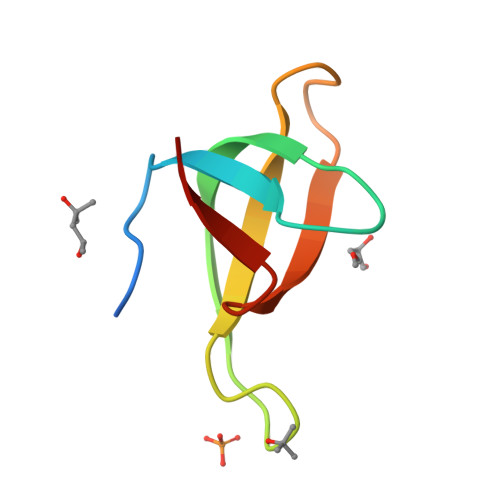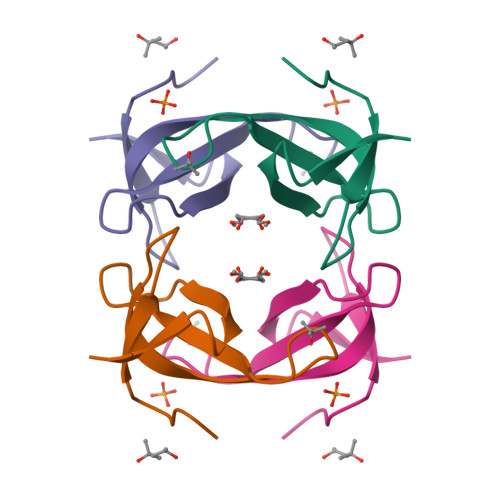Structure-Based Design of Dimeric Bisbenzimidazole Inhibitors to an Emergent Trimethoprim-Resistant Type II Dihydrofolate Reductase Guides the Design of Monomeric Analogues.
Toulouse, J.L., Yachnin, B.J., Ruediger, E.H., Deon, D., Gagnon, M., Saint-Jacques, K., Ebert, M.C.C.J.C., Forge, D., Bastien, D., Colin, D.Y., Vanden Eynde, J.J., Marinier, A., Berghuis, A.M., Pelletier, J.N.(2019) ACS Omega 4: 10056-10069
- PubMed: 31460098
- DOI: https://doi.org/10.1021/acsomega.9b00640
- Primary Citation of Related Structures:
6NXZ, 6NY0 - PubMed Abstract:
The worldwide use of the broad-spectrum antimicrobial trimethoprim (TMP) has induced the rise of TMP-resistant microorganisms. In addition to resistance-causing mutations of the microbial chromosomal dihydrofolate reductase (Dfr), the evolutionarily and structurally unrelated type II Dfrs (DfrBs) have been identified in TMP-resistant microorganisms. DfrBs are intrinsically TMP-resistant and allow bacterial proliferation when the microbial chromosomal Dfr is TMP-inhibited, making these enzymes important targets for inhibitor development. Furthermore, DfrBs occur in multiresistance plasmids, potentially accelerating their dissemination. We previously reported symmetrical bisbenzimidazoles that are the first selective inhibitors of the only well-characterized DfrB, DfrB1. Here, their diversification provides a new series of inhibitors ( K i = 1.7-12.0 μM). Our results reveal two prominent features: terminal carboxylates and inhibitor length allow the establishment of essential interactions with DfrB1. Two crystal structures demonstrate the simultaneous binding of two inhibitor molecules in the symmetrical active site. Observations of those dimeric inhibitors inspired the design of monomeric analogues, binding in a single copy yet offering similar inhibition potency ( K i = 1.1 and 7.4 μM). Inhibition of a second member of the DfrB family, DfrB4, suggests the generality of these inhibitors. These results provide key insights into inhibition of the highly TMP-resistant DfrBs, opening avenues to downstream development of antibiotics for combatting this emergent source of resistance.
Organizational Affiliation:
Département de Biochimie, Institute for Research in Immunology and Cancer (IRIC), and Département de Chimie, Université de Montréal, Montreal H3C 3J7, Quebec, Canada.





















